2025 Morgan Plus Four Review: A Timeless Reminder of Olde-School Driving Fun
The last time British coachbuilder Morgan sold the historic Plus Four model here in the United States, in 2005, the chassis was literally made of plywood – or so the urban legend goes. In point of fact, Morgan always used a steel chassis from the Plus Four’s debut in 1950 all the way until the latest generation debuted in 2020.
But that rumor likely grew out of the fact that the Plus Four still uses ash wood for the body frame, even now in 2025, as Morgan begins to ship the latest generation to the United States complete with a BMW powertrain, Bluetooth connectivity, and a stretched design that fits more people more comfortably – all riding on a new aluminum chassis structure beneath the skin. Super.
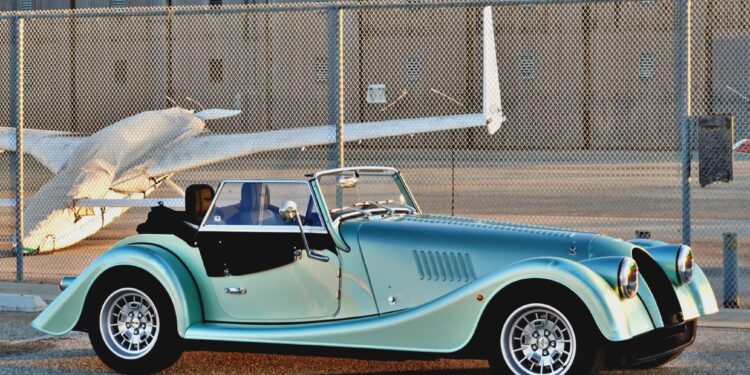
Unfortunately, in a baffling decision, Morgan decided against importing a manual transmission-equipped Plus Four to the United States. A stick shift is available in Europe, but this meant that I recently borrowed a press loaner, not just eager to learn about the new aluminum chassis, but also to experience how such purposefully vintage style matches – or clashes – with the inability to row my own gears.
The Plus Four Returns To America

Morgan sources the engine and transmission as a unit from BMW, in this case, a turbocharged 2.0-liter inline-four good for 255 horsepower and 295 pound-feet of torque, married to an eight-speed torque converter automatic. Calling the little mill a commuter car engine makes some semblance of sense, given the relatively low 6,500-rpm redline. But remember, this tiny roadster weighs just 2,293 pounds, thanks to the aluminum chassis and ash wood body frame.
With plenty of low-end torque on tap to scoot that minimal mass around, Morgan claims the Plus Four can manage a 4.8-second sprint to 100 kmh (62 mph) when equipped with the automatic. But don’t worry about feeling cramped into such a tiny car, which, despite actually measuring slightly less in overall length than the preceding generation, uses an 82 mm longer wheelbase. Technically, the Plus Four counts as a replica car, but it’s also 40 mm wider and 31 mm taller than before, so I fit just fine at six-foot-one despite the two seats being close enough together for the occasional elbow bump with a passenger.
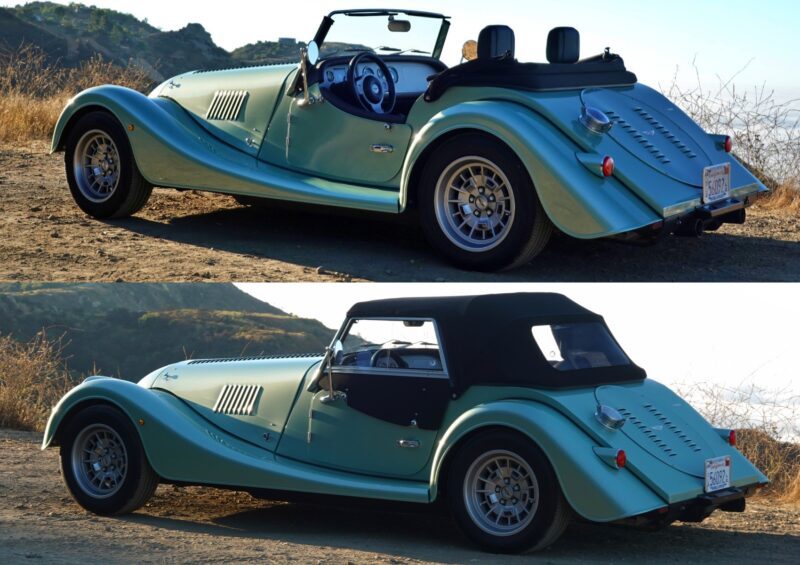
Just don’t ask about climbing in and out, which simply cannot be done without a bit of awkwardness. There’s no real armrest on the doors, either, and the pedal box barely fit my size 10 shoes – imagining a clutch pedal squeezed in, I began to appreciate the automatic transmission a little more. The steering wheel adjusts up and down, without telescoping in and out, but I found the seats ride low enough to create plenty of headroom with the convertible top in place. Matching the exterior, the optional Comfort Plus seats hew more toward a classic cruiser mentality rather than a hardcore sports car.

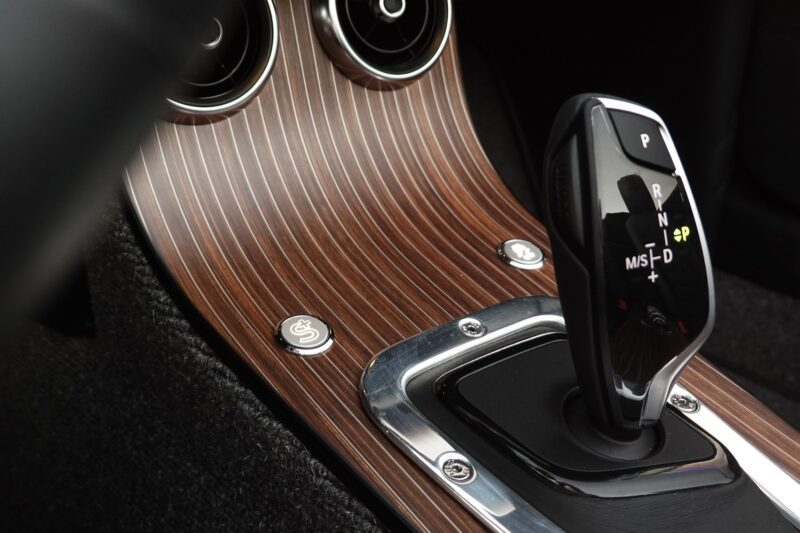
And yet, the lightweight chassis makes driving the Plus Four anywhere near the limit a ton of fun. Modern supercars with the power-to-weight ratios of racecars (or better) are one thing, but a lightweight and low-slung sports car with just the right amount of power can nonetheless feel exponentially faster. Not just because sitting so close to the ground creates a forced perspective, but because cornering and braking require so much less grip to hold and haul down legitimate pace. All while the BMW inline-four churns out a mirthful soundtrack, turbo spooling up and exhaust overrun burble from the exhaust pipes that seemed to stick out immediately behind my skull.
The auto transmission even works fairly well, even if it’s not as snappy as a dual-clutch and prefers stately driving more than hard charging. But skipping the manual here in the United States absolutely misses the mark. Sure, take rates for stick shifts in the U.S. pale in comparison to Europe – but this car’s target customer base is a self-selecting sample that clearly wants something out of the ordinary, rather than a commuter EV or a more modern sports car.
Modernized, Yet Timelessly Classic
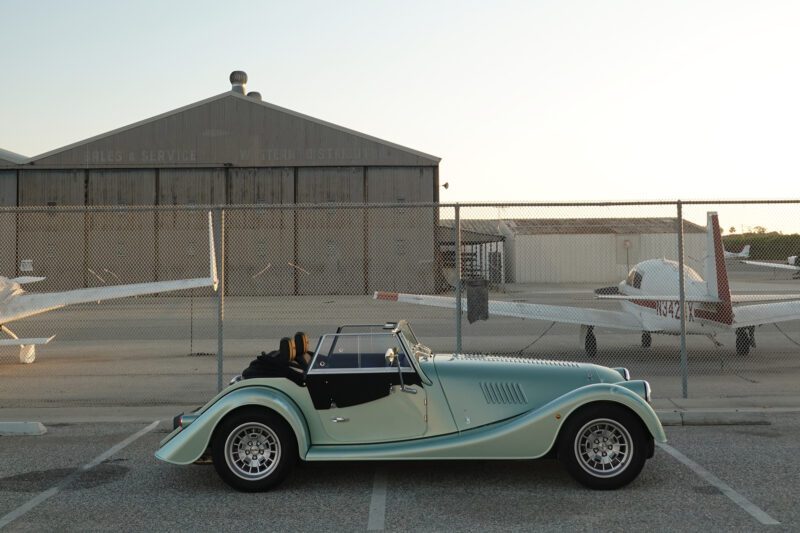
The first time I pulled away in the Plus Four, I marveled at how battened down the chassis feels. Cracks in the road and speed bumps created no suspension clunks or wobbles, quite an impressive feat for a car so small that it’s built using wood. Plus, with so little weight over the rear, the Plus Four happily chirped the tires loose between shifts up to third gear once I popped the horrific BMW shifter to the left for Sport mode.
That futuristic, angular design looks entirely out of place here – even more so than in an Ineos Grenadier. Selecting Sport+ then requires pushing a much more pleasing metal button ahead and to the left on the walnut center console, and I regularly held down the mirrored ESC button to fully turn off traction control intervention. This brought up a small warning on the mildly configurable digital gauge screen, another concession to modernity that seems slightly out of place in something otherwise analog.

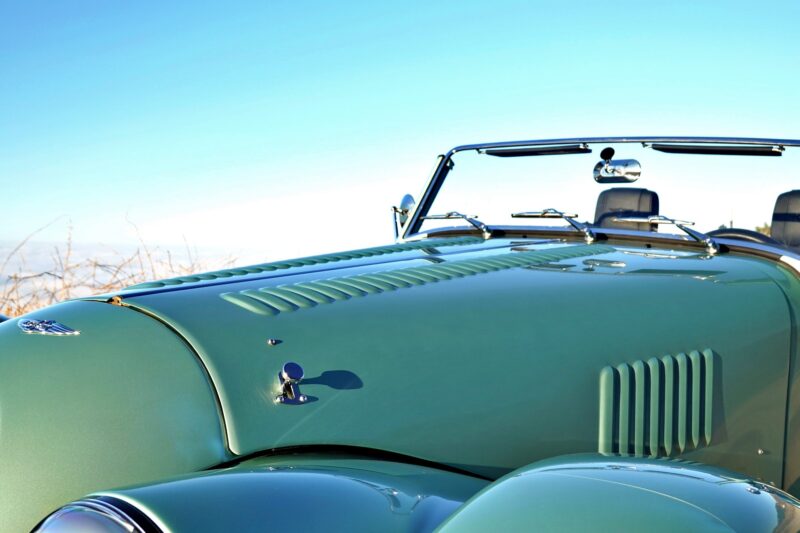
This particular Morgan arrived in America equipped with the Dynamic Handling Pack, a $2,410 option that adds adjustable shock dampers, a rear sway bar, and marginally stiffer rear springs. In its factory setting, the suspension tuning perfectly bridges the gap between firm and compliant – simultaneously comfortable enough for daily life but also stiff enough to handle hard cornering in canyons. With a bit more mass from the engine out front, the rear sway bar in particular contributes to a happy propensity toward easily controlled slides, which give way to oversteer in a satisfying and communicative transition while whipping through consecutive curves.
The Plus Four serves as yet another reminder that having slightly more power than tire traction makes driving a ton of fun. Sure, modern sports cars and supercars can go right ahead and chase lap times with those enormous tires on enormous wheels, Morgan seems to say. Instead, the Plus Four sticks with a scant set of 205-millimeter Avons mounted on 15-inchers that reminded me of Campagnolo wheels on Maseratis from the late-1970s and early-80s.
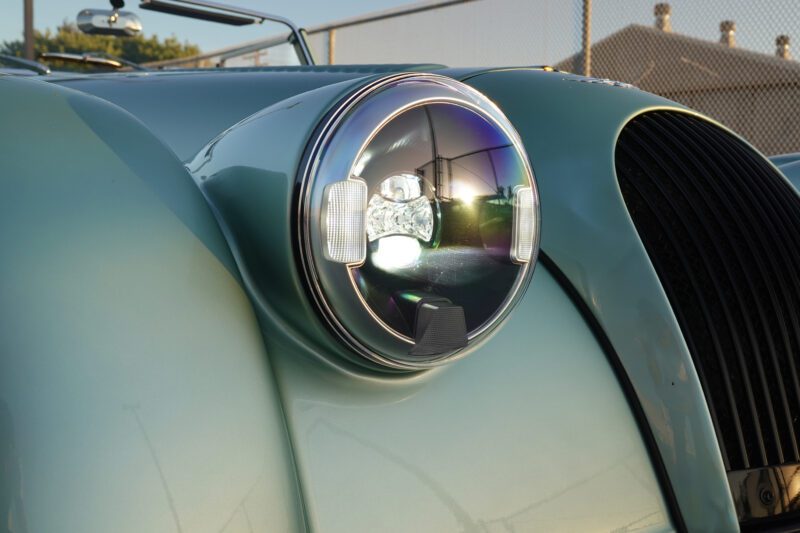



As surprisingly well as it drives, the Plus Four nails the classic style even better. Ice Green metallic paint absolutely glistens, highlighting every swooping curve from every angle. I’d still take a little spare tire on the rear decklid, though, and the profile definitely looks best with the top laid back and the side panels removed – from both a design standpoint and the driver’s perspective. I removed the side panels almost immediately, using a little tool on the key ring to loosen metal knobs on the exterior of the doors. A carrying case then protects the glass and leather from damage, though the whole package doesn’t quite fit behind the seats nicely.
Morgan clearly invested a ton of time and effort into developing the new bonded aluminum chassis, as confirmed by the impressive ride quality. But a close eye on build quality is also clearly reveals some smaller details that went overlooked, in addition to where to store the door panels: one glued-on leather panel already detaching from a door, a hilarious lumbar support system actuated by flimsy hand pumps zip-tied in front of the lower seat cushion, nice metal dials for the climate control and volume that were unfortunately designed in such a way that the decals becomes meaningless once spun around in any direction.
Worst of all, the sun visors mount to the top of the windshield surround with a long Allen bolt and spacer, but no rubber washers or dampers of any kind. So, any smallest reverberation from the road or wind caused horrific rattling directly in front of my face on every single drive. On my own car, I would remove and replace this tiny yet unignorable annoyance, but that’s not exactly the kind of thing I want to be doing with my brand-new six-figure toy.
Morgan Plus Four: Conclusions

I gave back the Morgan, sad to see it go. Over the course of the loan, I increasingly grew comfortable daily driving around big pickup trucks and SUVs with tires that rode about as high as my shoulders. There’s simply nothing else new quite like the Plus Four on American roads, as lightweight sports cars increasingly go extinct. And the style truly elevates the Morgan into a class of one: this little British roadster turned more heads than any car I’ve ever driven bar none, including Ferraris, Lamborghinis, Bugattis, and more!
Imagining a Plus Four in the driveway next to a G-Wagen (or a Grenadier, for that matter) sure seems like a perfect two-car solution for daily life and weekend fun. Such a unique, bespoke character makes the base price of $84,995 seem fairly reasonable, though my tester ramped up to $103,970 as optioned. Most importantly, all the attention the Plus Four received from pedestrians and other drivers brought a smile to everybody’s face, not just mine, as I ripped around town, despite lamenting the lack of a manual transmission, which would simply take the cake.
Review: 2025 Lexus LX700h Overtrail
by Kirk Bell
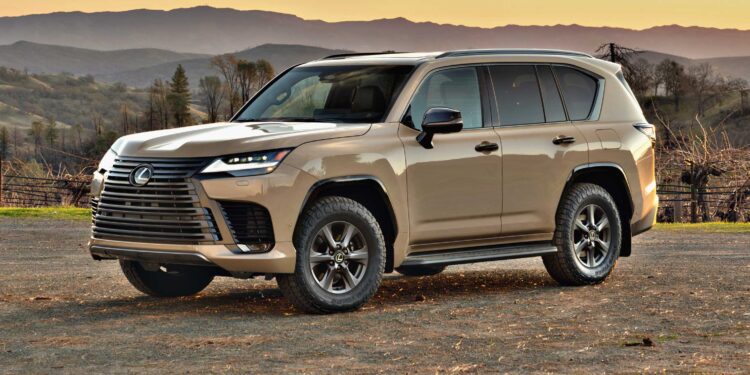
A 4WD That Is Highly Capable, Moderately Practical
The 2025 Lexus LX 700h Overtrail is an enigma. It’s the Japanese luxury brand’s flagship SUV, yet for every positive, there seems to be a negative. Driving on Southeastern Wisconsin freeways and country roads, the LX 700h demonstrates many strengths. It’s powerful, supremely comfortable, loaded with easy-to-use technology, and its ride is buttery smooth. However, I spot the shortcomings, too. The Lexus LX 700h has a hybrid powertrain, but it’s not that efficient, it lacks interior space for its massive size, and it handles poorly.
To get the most out of it, I should tap into its greatest strength by venturing off the beaten path. Instead, I’m driving it like most buyers will – to get from Point A to Point B. The 2025 Overtrail represents two firsts. The hybrid powertrain and the Overtrail trim are both new for the LX this year, and both contribute to advanced off-road prowess.
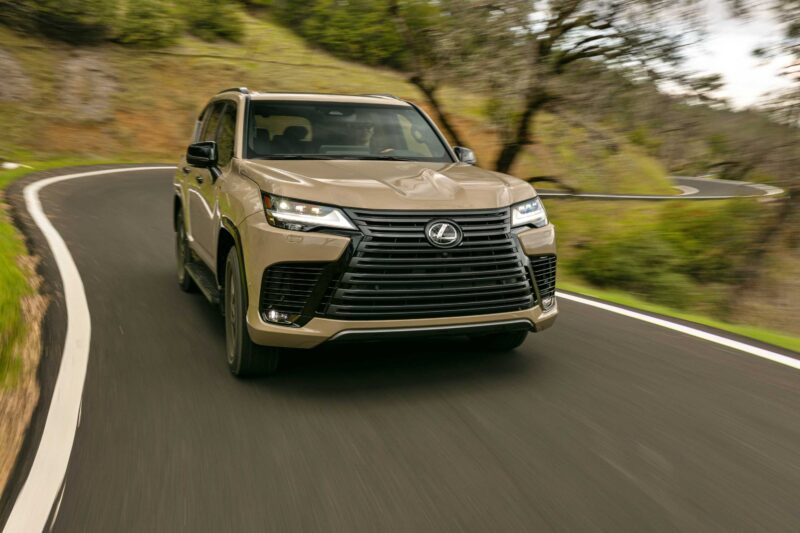
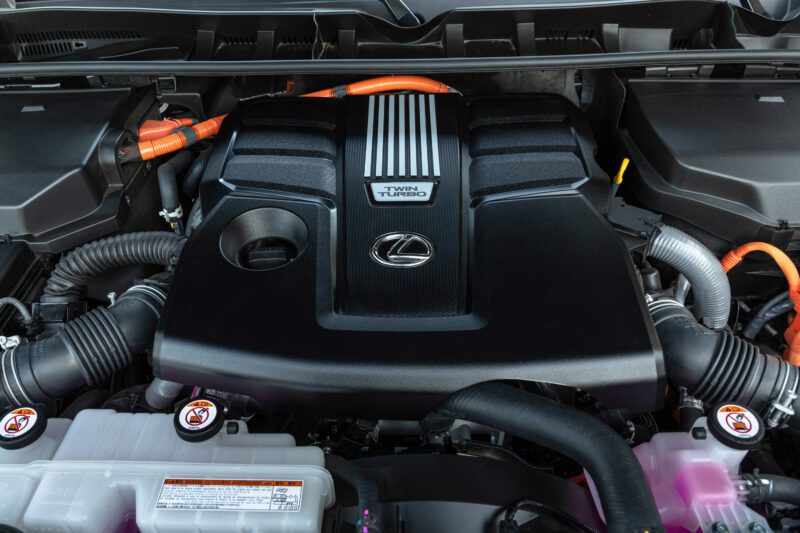
The hybrid system consists of a twin-turbocharged 3.4-liter V6 from the LX 600 with an electric motor mounted between the engine and 10-speed automatic transmission. The engine spins up 409 horsepower and 479 pound-feet of torque, and the electric motor increases total output to 457 horsepower and a stump-pulling 583 pound-feet of torque.
Unlike other Toyota/Lexus hybrid systems, the LX 700h has a traditional starter and alternator rather than using the electric motor for their functions. That’s to keep the powertrain working should the hybrid system somehow fail while the Overtrail is off-roading. The precise power delivery offered by the hybrid system can also be a boon when off-roading in situations when a slight tip of the throttle might get you onto solid footing.
More than that, though, the hybrid system makes the LX quicker and more efficient, but not by much in either case. The 0-60 mph time drops from 6.9 to 6.4 seconds, and fuel economy improves by 2 mpg, to 19 mpg city, 22 highway, and 20 combined – all for an additional $9,000 over the price of the LX 600. You won’t recoup that cost any time soon.
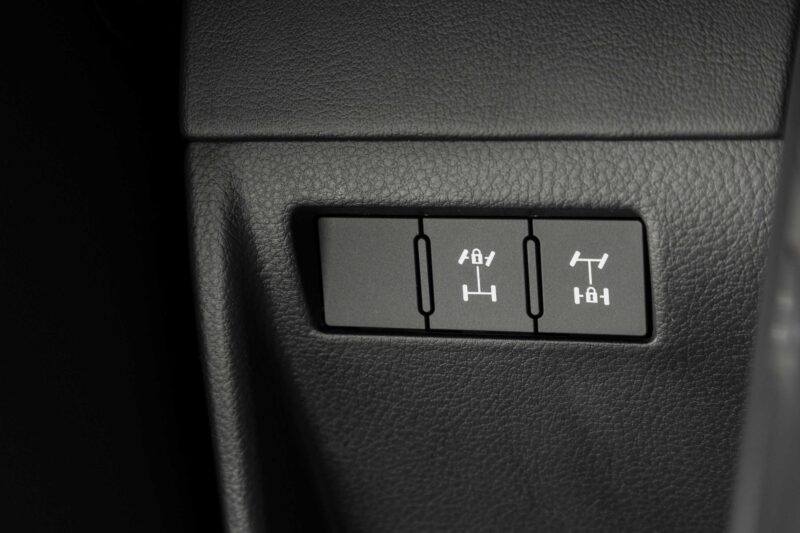
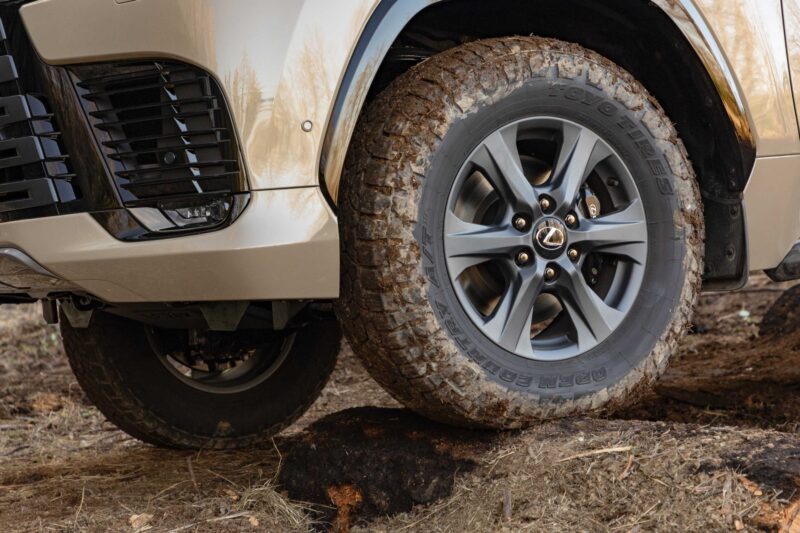
Every LX comes standard with a full-time four-wheel-drive system with low-range gearing, a locking center differential, and a hydraulic suspension that can raise the ground clearance by two inches from the standard 8.3 inches for off-roading. The Overtrail trim goes further by adding 33-inch all-terrain tires on 18-inch wheels and front and rear locking differentials.
A big footprint, a tall ride height, mushy tires, and an off-road-tuned suspension hurt the LX’s handling, but the 265/70R18 Toyo Open Country A/T III tires that roll over during sharp changes of direction also work in concert with the double-wishbone front suspension, multi-link independent rear suspension, and standard adaptive dampers to soak up even sharp bumps. The LX’s TNGA-F ladder frame platform causes only modest pickup truck-like jiggle on broken pavement.
The hydraulic suspension is not as advanced as the air suspensions of several rivals, lacking the ability to react to road conditions in real time and doing nothing to fight the LX 700h’s copious body lean through corners. The LX drives bigger than its considerable size, with slow steering that has a little play on center and more body lean than you’d get in the even larger Cadillac Escalade or Lincoln Navigator.
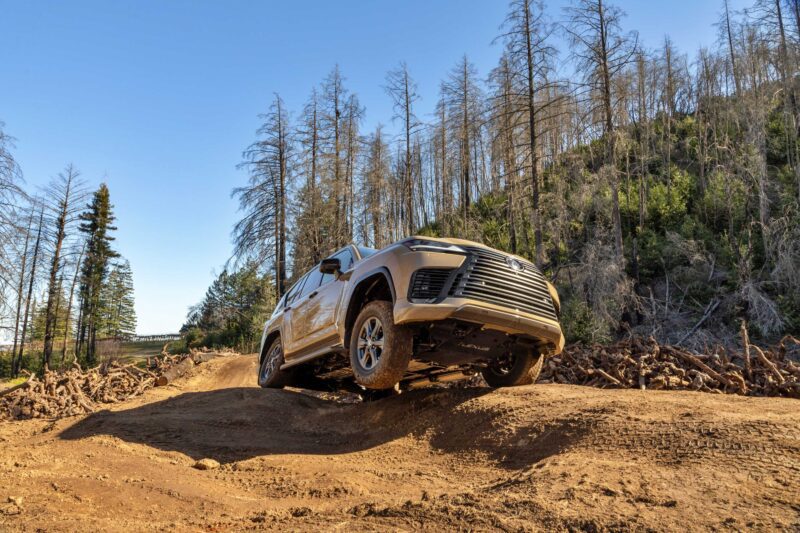
The last generation of the LX offered the Kinetic Dynamic Suspension System of hydraulic-linked active anti-roll bars that fought body lean and provided greater wheel articulation for off-roading. The new generation would benefit from KDSS as well. How about it, Lexus? The tradeoff for the poor handling is amazing off-road prowess. Few vehicles on the market have front and rear lockers, which can be deployed to lock the wheels on an axle should one wheel slip to find traction with the other. That’ll get you out of tough situations that other adventure vehicles can’t.
The hybrid system’s nickel-metal hydride battery is located in the rear floor area and sealed within a box to keep it dry as the vehicle fords up to 27.5 inches of water. Lexus provides a front skid plate and two additional protective plates to protect the underbody from off-road hazards.
The LX 700h also has a two-speed transfer case for low-range gearing, and each of the H4 (High 4) and L4 (Low 4) ranges has its own drive modes. Auto, Sand, and Mud modes are common to both ranges, while H4 adds Deep Snow and L4 adds Rock mode. Those modes are in addition to the standard on-road drive modes that consist of Normal, Eco, Comfort, Sport S, Sport S+, and programmable Custom.
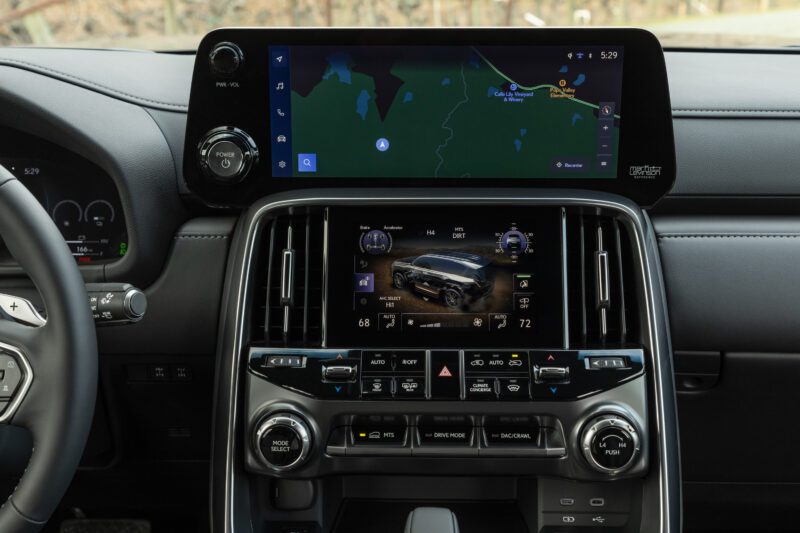
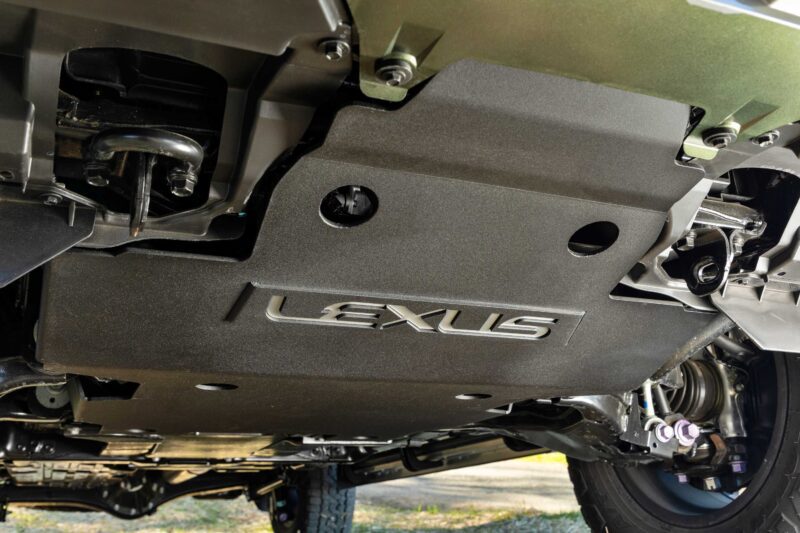
Beyond that, the LX 700h offers five settings of Crawl Control that set the vehicle speed to get through tricky off-road situations. This system comes with Turn Assist that brakes the inside rear wheel to shorten turns. A standard Multi-Terrain Monitor uses four cameras to provide a panoramic view, as well as underfloor, front, and rearview images on the 12.3-inch infotainment touchscreen. A smaller 7.0-inch touchscreen below that screen offers such off-road data as brake and accelerator percentage, vehicle height, differential lock status, and Crawl Control setting. This screen also handles the climate and ambient lighting controls.
Inside, the LX 700h Overtrail combines technology with unmistakable luxury. Tech features run the gamut from 12.3-inch screens for infotainment and the gauge cluster to a rear camera mirror to a 4G wi-fi hotspot to a digital key. High-quality materials include soft semi-aniline leather upholstery and black open-pore wood trim. The LX 700h Overtrail also comes loaded with amenities, including heated and ventilated first- and second-row seats, massaging front seats, a heated steering wheel, and a cool box.
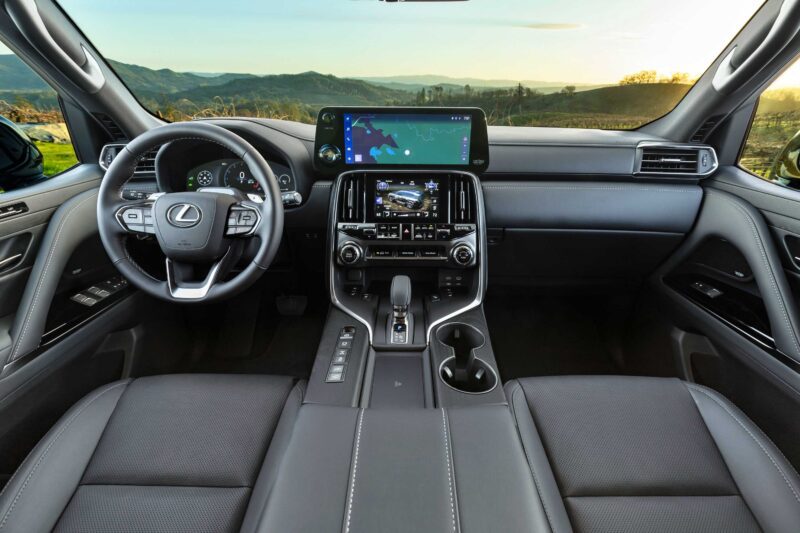
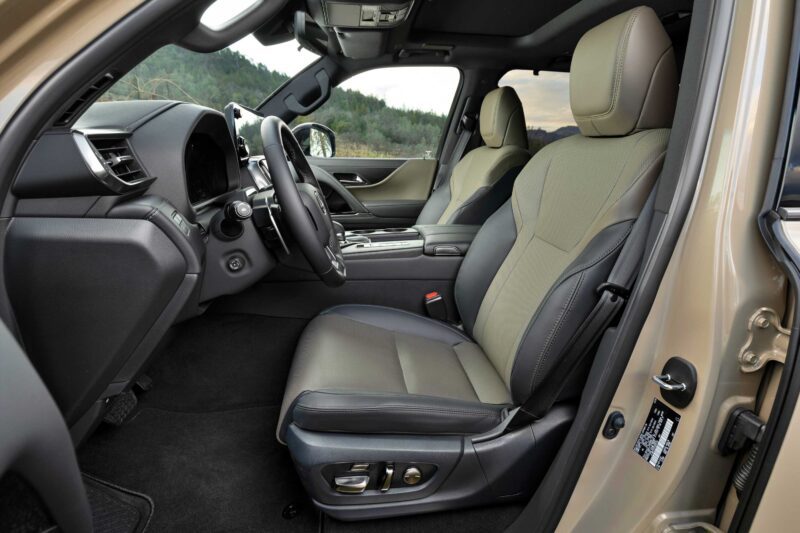
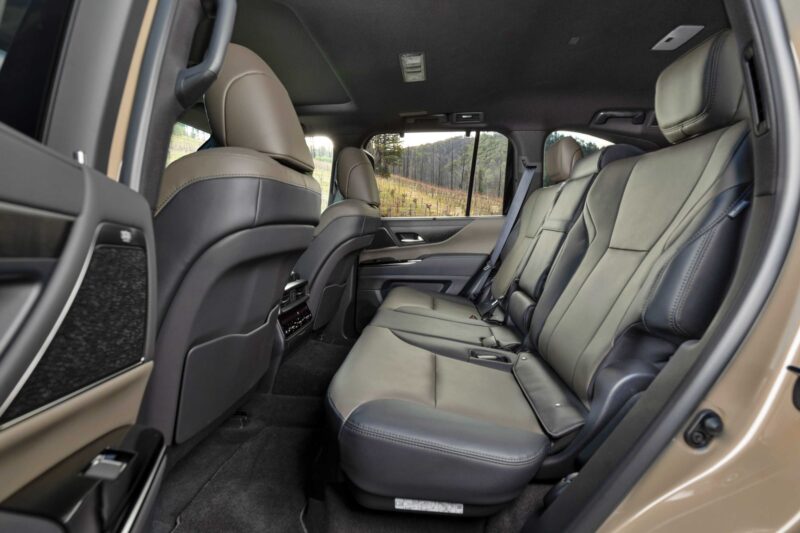
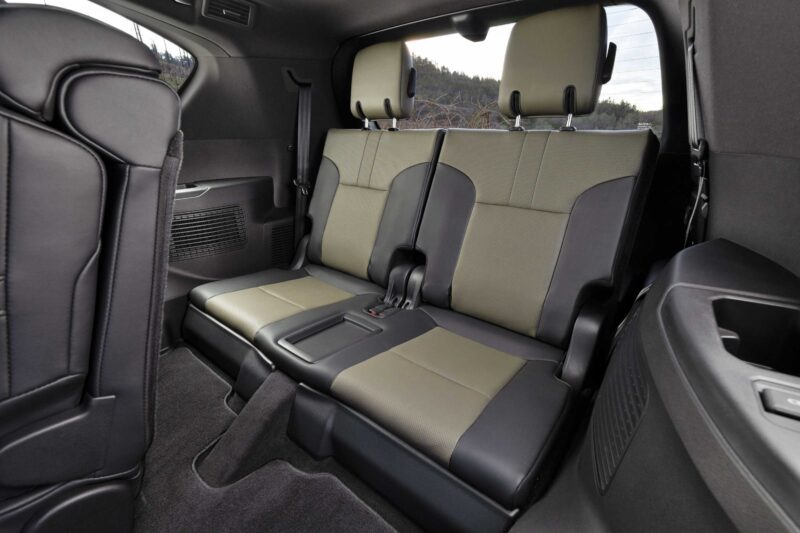
However, the cabin offers only modest utility. At 200.6 inches long, the LX is about a foot shorter than the standard wheelbase version of the Cadillac Escalade, or about as long as the Dodge Durango. My Overtrail tester has the third-row delete option, which is just as well because the underfloor battery cuts into both cargo space and third-row passenger space. The LX 700h has only 7.2 cubic feet of cargo space with the rear row up and 62.8 cubic feet with the second and third rows folded flat. The latter figure is about nine cubic feet less than the LX 600. It’s even less space than the compact Toyota RAV4.
The Overtrail may sit atop the LX lineup for off-road capability, but it’s the least expensive LX. It’s priced at $115,350, including a $1,350 destination fee. For that money, buyers get the smoothest riding LX and the most capable off-roader in the Lexus lineup, though they have to give up handling and pay more for a marginal efficiency gain. Even flagship models don’t have it all.
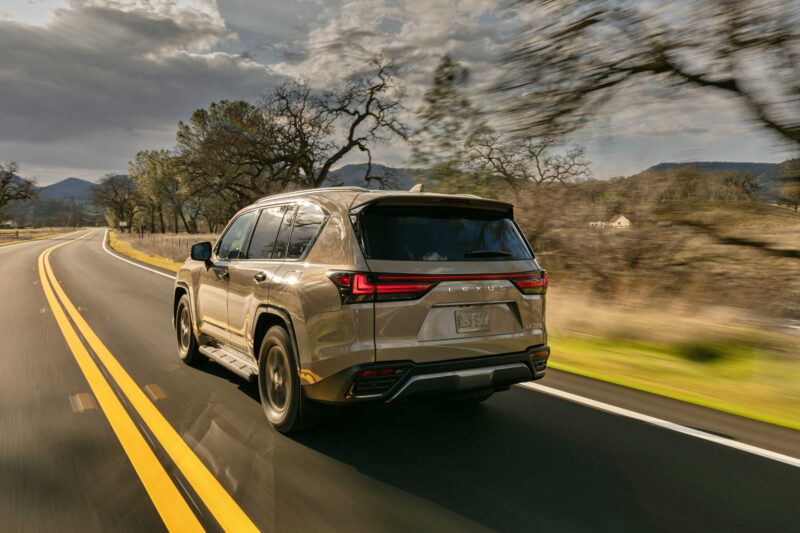
Images Source: Lexus



